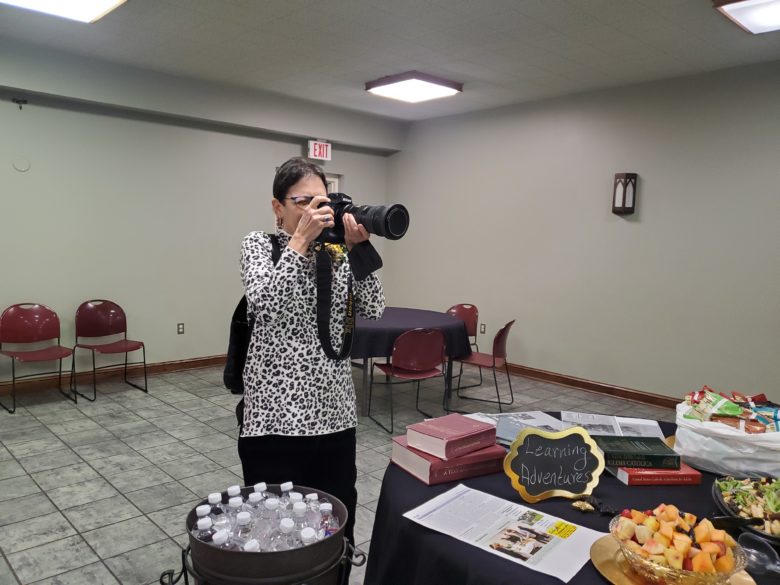
Longtime diocese staple, Fabvienen Taylor bids farewell


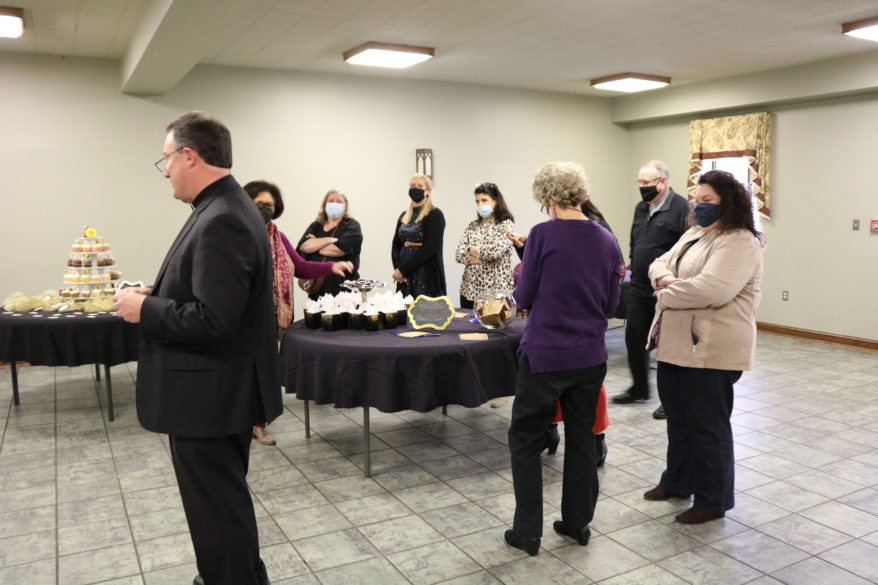
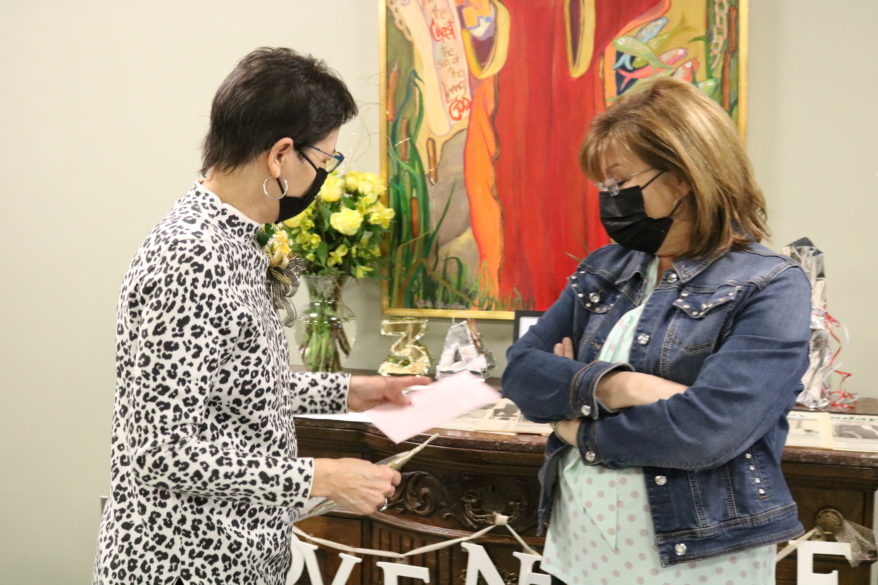
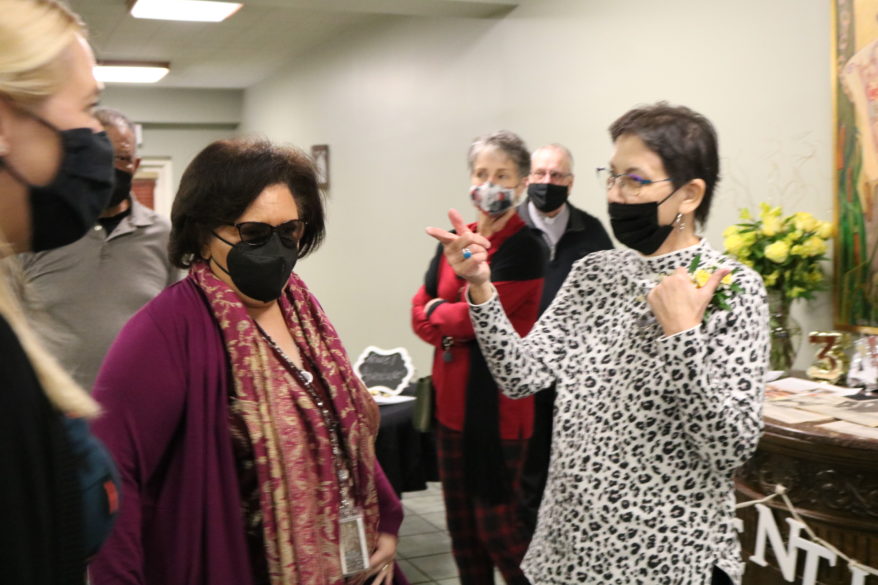
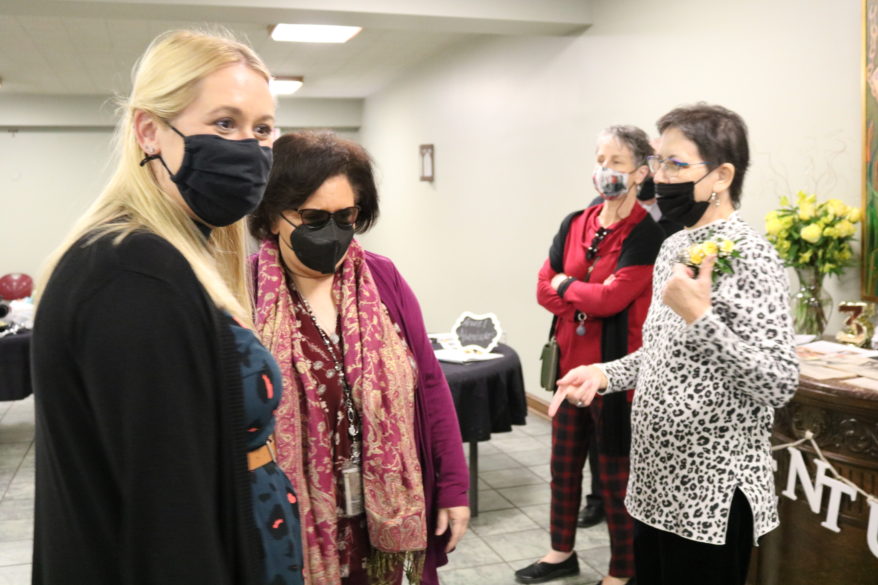

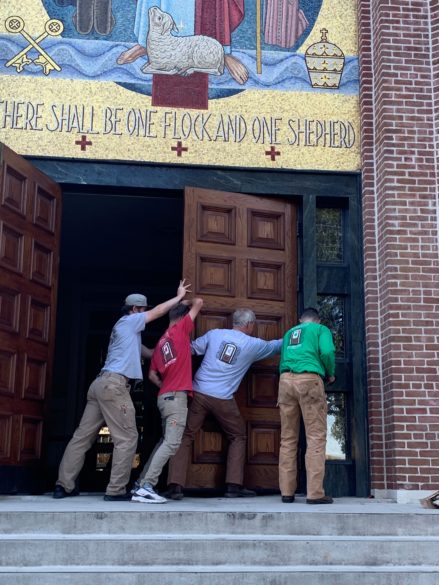
PARISH, FAMILY AND SCHOOL EVENTS
GREENVILLE St. Joseph, Spring Fling 2022, $10,000 Cash Drawdown Mardi Gras, Saturday, Feb. 26 at The Gin at Dunleith in Leland. Drawdown begins at 6 p.m., dinner at 6:30 p.m. Tickets are $100 and may be purchased at church or school office. Details: church office (662) 335-5251.
FLOWOOD St. Paul, Black & White Ball/Annual Drawdown, Saturday, Feb. 19, 6:30 p.m. at the Family Life Center. Tickets: $125 and raffle tickets $1. Details: Pat Scanlon (601) 953-6370.
JACKSON St. Richard, Annual Super Bowl Sunday Pulled Pork Dinner. Tickets $10 each and funds raised support St. Richard Boy Scout Troop 30. Dinners available for pick-up on Feb. 6. Tickets are available for purchase in the church and school offices. Details: church office (601) 366-2335.
St. Richard, Bereavement Support, Thursday, Feb. 10 at 6:30 p.m. in Chichester Room. Speaker: Pat Walden, retired St. Dominic director of pastoral care. Topic: “Guilt in Grief – How to Deal with it.” All are welcome. Details: Suzie Cranston (601) 573-3347 or Nancy McGhee at (601) 942-2078 or ncmcghee@bellsouth.net.
St. Richard School, Krewe de Cardinal, Friday, Feb. 25. This festive evening features a brass band, silent and live auctions, cash drawing, cocktails and cuisine. Tickets: $50/per person or $100/per couple, in advance. Details: development@strichardschool.org.
LELAND St. James Feast of St. Blaise/Blessing of the Throats. On Feb. 3, at 12:15 p.m. for parishioners of St. James, Immaculate Conception Hollandale and Our Mother of Mercy Anguilla. Details: church office (662) 686-7352.
MADISON St. Joseph School, Jeans, Jazz & Bruin Blues $10,000 Drawdown, Saturday, Jan. 29 at the Country Club of Jackson. Details: www.stjoedrawdown.com.
St. Francis, Discovering Christ begins Tuesday, Feb. 1. Talk about big questions: What is the meaning of life? Why am I here? Join us one night a week for seven weeks. Details: www.stfrancismadison.org/dc-register-1.
OLIVE BRANCH Queen of Peace, Spaghetti dinner after Mass on Sunday, Jan. 30. Cost: $8/plate; $25/family; $2 smoked sausage ($1 half); $10 quart gravy; $5 quart slaw. Details: church office (662) 895-5007.
PEARL St. Jude, Super Bowl Chicken Plates. Knights are selling chicken plates for $12 for pick up between 1-2 p.m. on Sunday, Feb. 13. Tickets sold through Sunday, Feb. 6. Details: church office (601) 939-3181.
TUPELO St. James, Adult Trivia Night, Feb. 19 at 6 p.m. at Kingfisher Lodge. Food and drinks served. RSVP to Mary Frances Strange at https://linktr.ee/stjamestupelo Details: church office (662) 842-4881.
SAVE THE DATE
YEAR OF THE EUCHARIST A parish mission on the Eucharist and the Mass is available in the diocese at two locations this Lent. Father Aaron Williams will offer a three day mission at St. Mary’s Basilica Natchez from March 8-10 and at Immaculate Heart of Mary Greenwood from March 27-29. All sessions will begin at 6 p.m.
JACKSON St. Peter Cathedral the Apostle, Bishop Chanche Awards ceremony on Saturday, Feb. 19 at 11 a.m.
TRIPS WITH FATHER DAVID O’CONNOR Father O’Connor will be hosting trips to Italy (May 28 – June 6), England and Wales (June 23 – July 3) and Ireland (Sept 7-15). Details: For Italy trip visit caragrouptravel.com/italy-with-father-oconnor-2022/. For England and Wales trip visit caragrouptravel.com/england-and-wales-with-father-oconnor/. For Ireland trip visit caragrouptravel.com/tour-of-ireland-with-father-o-connor-2022/.
COVID NOTE
As the Omicron variant continues, the Diocese of Jackson STRONGLY ENCOURAGES the wearing of masks to Mass and all parish gatherings. Social distancing of 3 feet is recommended.
We appreciate all of your efforts to keep each other safe. Each parish may adapt protocols and make decisions according to the local reality of their individual parish communities.
By Matthew Young
Many people do not know of an immigration application known as Form I-751. This form is required for a certain category of permanent residents known, somewhat paradoxically, as “conditional permanent residents” to remove conditions on their status and receive a normal green card that is valid for ten years.
The conditional green card is given to people who have received their permanent resident status on the basis of a marriage that is less than two years old. The card is valid for two years. The purpose of Form I-751 is to further confirm that the marriage is legitimate.
It is not an absolute requirement that the immigrant remain married to their spouse in order to file Form I-751; there is a provision for applicants who have divorced their spouses since becoming permanent residents, as well as a provision for spouses who have been the victim of domestic abuse. There is also a provision for applicants whose spouse has died. However, in all cases evidence must be provided that the marriage was entered into in good faith.
It is very important that Form I-751 be distinguished from Form I-90. Form I-90 is the form used by non-conditional permanent residents to renew their green cards every ten years. A conditional green card cannot be renewed with Form I-90, and such an application will be denied.
Form I-751 can only be filed during a specific window of time: the 90-day period prior to the expiration of the conditional green card. Applications filed more than 90 days prior to the expiration will be rejected and returned to the applicant. Applications filed after the conditional green card has expired are likely to be denied, unless the applicant can show that the failure to file during the 90-day window was due to extraordinary circumstances beyond their control.
For information about legal services relating to immigration, call the Migrant Support Center at Catholic Charities of Jackson at 601-948-2635.
(Matthew Young is an attorney for the Migrant Support Center of Catholic Charities, Inc. Diocese of Jackson)
NATION
WASHINGTON (CNS) – Prominent leaders of the religious freedom movement introduced an organization they say will work to defend religious liberty and support political candidates at all levels of government who back the free practice of religion. Charging that religious practice is increasingly threatened by legal maneuvering and public actions that seek to limit the First Amendment’s guarantee of religious rights, speakers during an online launch of the organization Jan. 18 called on Americans to join the effort. Tom Farr, president of the Religious Freedom Institute, said the new organization will be known as the National Committee for Religious Freedom. It is being established as a separate nonprofit organization under the institute. “If religious freedom is diminished and damaged in America, our beloved country will be grievously harmed, but so too will the rest of the world,” Farr said during the launch event. “Our nation has built a system of religious freedom that, while never perfect, is unparalleled in the history of mankind. It stands as a guiding light for a world sorely in need of religious freedom.” The committee’s early efforts will focus on forming chapters in all 50 states. Supporters are asked to sign a pledge committing to protect religious freedom. The pledge is on the committee website at www.thencrf.org.
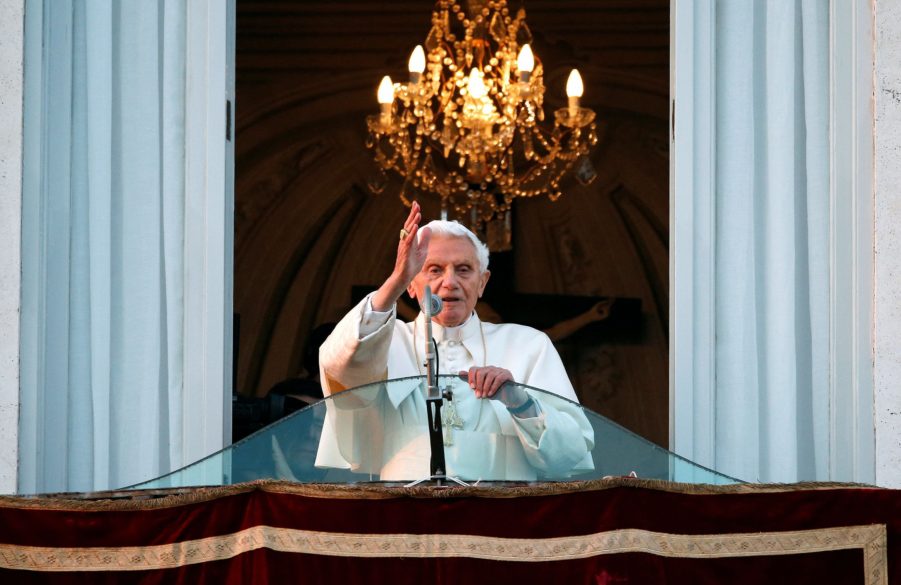
VATICAN
VATICAN CITY (CNS) – In the wake of a massive underwater volcanic eruption in Tonga, subsequent tsunamis and now contamination from volcanic ash and saltwater, Pope Francis has appealed for prayers for the people of the region. “My thoughts go to the people of the islands of Tonga, struck in recent days by the eruption of the underwater volcano, which caused enormous material damage. I am spiritually close to all the people suffering, imploring God for the relief of their suffering,” the pope said at the end of his general audience talk in the Vatican’s Paul VI audience hall Jan. 19. “I invite everyone to join me in praying for these brothers and sisters,” he said. The massive eruption Jan. 15 triggered a series of tsunamis that inundated coastal communities, destroying homes, contaminating water supplies and cutting off power and communications. Mounds of ash, which continued to fall from the volcano days after the blast, were also contaminating water sources and hampering efforts to bring in outside aid and rescue teams. However, there are concerns that bringing in aid from outside the region and distributing relief might spread the virus that causes COVID-19: Tonga recorded its first case in October. At least three people have been reported dead in the Tonga region and two in Peru from tsunamis triggered by the eruption.
WORLD
MUNICH, Germany (CNS) – A law firm’s report on how abuse cases were handled in the Archdiocese of Munich and Freising incriminated retired Pope Benedict XVI, with lawyers accusing him of misconduct in four cases during his tenure as Munich archbishop. Lawyer Martin Pusch of the law firm Westpfahl Spilker Wastl said the retired pope had denied wrongdoing in all cases, reported the German Catholic news agency KNA. Pusch expressed doubt about Pope Benedict’s claim of ignorance in some cases, saying this was, at times, “hardly reconcilable” with the files. At the Vatican, Matteo Bruni, director of the Vatican press office, said, “The Holy See believes it has an obligation to give serious attention to the document” on cases of abuse in the Archdiocese of Munich and Freising, but it has not yet had a chance to study it. “In the coming days, following its publication, the Holy See will review it and will be able to properly examine its details. Reiterating its sense of shame and remorse for the abuse of minors committed by clerics, the Holy See assures its closeness to all victims and confirms the path taken to protect the youngest, ensuring safe environments for them,” Bruni said. Retired Pope Benedict headed the Munich Archdiocese from 1977 to 1982, before being called to the Vatican to head the doctrinal congregation.
DUBLIN (CNS) – The Irish government has added a new public holiday to the national calendar to honor the country’s female patron, St. Brigid of Kildare. The fifth-century abbess – who is one of the country’s three patron saints along with St. Patrick and St. Columba – founded several monasteries of nuns. Her Feb. 1 feast day will become the new holiday; many Irish people mark that date as the traditional first day of spring. Bishop Denis Nulty of Kildare and Leighlin, where St. Brigid founded her largest monastic settlement, had backed calls for the female saint to be honored on the civil calendar. The new holiday, on which all public offices will close, will be in addition to St. Patrick’s Day, which falls on March 17 and is also a public holiday. This year, St. Patrick’s Day will have an extra holiday March 18 as a special “thank you” to front-line health care workers for their work during the COVID-19 pandemic.

By Ernest Bowker The Vicksburg Post
VICKSBURG – Rivalries in sports are a strange and complex thing.
No matter what side you’re on, they’re often touted on the surface as Good vs. Evil, the Cool Kids vs. the Jerks, Us vs. Them, and so on. There are teams that you love to hate for a variety of reasons, but there can also be a lot of mutual respect for the skills and talents of each.
Sometimes, it boils down to a family feud. We might want to punch you on game day, but we’ll hug it out and go eat somewhere afterward. You can pick on each other, but when the tough times hit you’ve got each other’s back.
The latter description certainly applies to St. Aloysius and Cathedral. The two Catholic schools along the Mississippi River have endured a nearly century-old rivalry that once led a coach from one side to famously – and, I assume, only half-jokingly – describe the other bunch as “the scum of the earth.”

Because both schools are governed by the Diocese of Jackson, however, they are kin. That same century of sports hatred has bred plenty of friendships and a bond that runs much deeper than the final score.
That bond was on display Tuesday, when Cathedral’s basketball teams journeyed up Highway 61 from Natchez to play St. Al. Between the girls’ and boys’ games, members of all four varsity teams gathered at halfcourt to pray and share their grief.
On Jan. 11, St. Al alums Caroline Simrall Hood and Chandler Roesch were involved in a car wreck. Simrall was killed and Roesch seriously injured. Both graduated from St. Al in 2018.
Three days later, Cathedral student Jordan Herrington was killed in another car wreck in Louisiana. Herrington, a 15-year-old sophomore, was a member of the football team.
During the prayer service Father Rusty Vincent said a few words, and some of the players exchanged hugs. Everyone in the gym surely passed along a few prayers of their own for the families and friends of Simrall, Roesch and Herrington.
The service was brief, and the sound of bouncing basketballs and warmup music soon replaced the grieving silence. The gravity of the moment should be lasting however.
When it comes right down to it, sports are a fun diversion for us all. No matter the result when the final buzzer sounds, life and time march on and bigger things await.
I doubt Simrall and Herrington knew each other, separated as they were by time, distance and a hundred other facts of life. But for one moment Tuesday they brought a gym full of people together to remind us all that in even the biggest rivalries we can take a moment here and there to share our humanity, our passion and our grief.
(Ernest Bowker is the sports editor of The Vicksburg Post. He can be reached at ernest.bowker@vicksburgpost.com. Re-printed with permission.)
By Kurt Jensen
WASHINGTON (CNS) – One aspect of the annual March for Life that never changes is the loud cheering when the lead group, carrying the banner, arrives in front of the Supreme Court.
That tradition was sustained Jan. 21 as groups from Christendom College in Front Royal, Virginia, and Immanuel Lutheran School in Alexandria Virginia, joined by Bishop Michael F. Burbidge of the Catholic Diocese of Arlington, Virginia, arrived from the pre-march rally held in subfreezing temperatures on the National Mall.
The march up Constitution Avenue to the court had taken them slightly more than two hours.
The crowd, not quite the more than 100,000 who attended in 2020, nonetheless appeared robust, and easily was within the estimate march organizers always give as being in the tens of thousands.
And that was just fine with Jeanne Mancini, president of the March for Life Education and Defense Fund.
“Every year is unique,” she told Catholic News Service before the rally began. “But the energy and enthusiasm of the marchers is palpable.”

Mancini wouldn’t speculate on the future of the national march if, later this year, the U.S. Supreme Court effectively overturns the 1973 Roe v. Wade decision by upholding the Mississippi abortion law in Dobbs v. Jackson Women’s Health Organization.
But there’s one plan in place if that occurs.
Overturning Roe would return all abortion restrictions to the states. So Mancini said the plan is to have statewide marches established in all 50 states over the next seven years. There are currently a handful of state marches, an effort that began six years ago.
Jeff Hunt, director of the Centennial Institute, a think tank attached to Colorado Christian University, said he thought legalized abortion was a nonstarter with the young people who have dominated March for Life for many years.
“Many of them grew up with their brother’s or sister’s sonogram taped to the refrigerator door,” he said. “I think that’s shaping the idea that a child is not a bunch of cells you can kill.”
Marianne Hofer, coordinator of the student pilgrimage from the University of Mary in Bismarck, North Dakota, said, “We’re extremely excited. We’re very honored to be here at a time when Roe could be overturned.”
The university sent 230 students. Hofer estimated that about half were at their first March for Life.
The march was briefly delayed after it got underway when members of Patriot Front, known as a white nationalist hate group, attempted to march alongside. But they were quickly dispersed.
“March for Life promotes the beauty, dignity and worth of every human life by working to end the violence of abortion. We condemn any organization that seeks to exclude a person or group of people based on the color of their skin or any other characteristic,” Mancini told CNS later in reaction to Patriot Front’s effort to join the march.
“Such exclusion runs counter to our mission which recognizes that all human lives are equal from the moment of conception: equality begins in the womb,” she said.
In a statement issued ahead of the march, Bishop Burbidge said the March for Life “is a powerful witness to essential truths that unite us: All of life is sacred and, thus, the life of the unborn child must be protected from the horror of abortion and life at every stage must be revered, cherished and treasured.”
“We march peacefully each year in our nation’s capital to give witness to these truths to a nation in which many in public office and others throughout our communities continue to reject them. Yet we will never despair nor tire of proclaiming the Gospel of Life, with firm belief in the power of God to transform hearts,” he added.
He echoed what Baltimore Archbishop William E. Lori said in his homily at a Jan. 21 vigil Mass at the Basilica of the National Shrine of the Immaculate Conception: that the church stands ready through its many pastoral ministries “to assist parents who choose life and need support and care.”
Por Padre Clem Oya
Un pasaje del evangelio nos presenta la reacción de los judíos a Jesús cuando les declara su misión mientras lo escuchan en la sinagoga.
La Biblia nos dice, “Al oír esto, todos los que estaban en la sinagoga se enojaron mucho. Se levantaron y echaron del pueblo a Jesús, llevándolo a lo alto del monte sobre el cual el pueblo estaba construido, para arrojarlo abajo desde allí. Pero Jesús pasó por en medio de ellos y se fue.” Lc 4:28-30
La Biblia contiene una situación similar. Dios fortalece al profeta Jeremías cuando comienza su misión con una nación obstinada: “Ellos te harán la guerra, pero no te vencerán porque yo estaré contigo para protegerte. Yo, el Señor, doy mi palabra.” Jeremías 1:1-19
¿Cuál es el significado de este mensaje? ¿Cómo nos afecta esto hoy? ¿Qué desafío nos plantea como Iglesia?
Cuando escuchamos la palabra “profeta”, nuestra mente va directamente a los tiempos bíblicos. Pensamos en Isaías, Elías, Jeremías, etc.
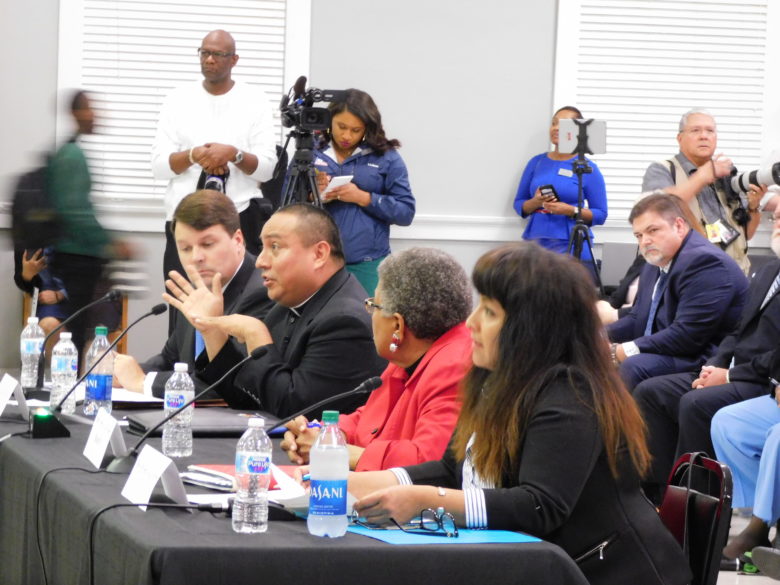
Pero es más que eso. En virtud de nuestro bautismo, cada uno de nosotros se ha convertido en un “Sacerdote, Profeta y Rey”. Como Jeremías, cada uno de nosotros es un profeta, llamado por Dios, para proclamar la Verdad a todas las naciones.
Hay momentos, sin embargo, en que tenemos miedo de decir la verdad, de denunciar situaciones de injusticia y prácticas contrarias al evangelio; tenemos miedo de enfrentarnos a los opresores por temor a ser rechazados o a perder nuestra popularidad. A veces tenemos miedo de decir la verdad porque no queremos perder a nuestros amigos, familiares o personas que siempre se sienten ofendidas al escuchar la verdad. El pasaje del evangelio de hoy nos desafía a enfrentar el rechazo, incluso por parte de los amigos más cercanos, por el bien de la verdad.
Es muy fácil para nosotros como Iglesia criticar las estructuras sociales, políticas y económicas de nuestro tiempo, pero como cristianos debemos ser fuertes y valientes para llevar a cabo nuestro papel profético, primero, entre nosotros. Como cristianos, nuestro papel comienza en la familia, la Iglesia doméstica. Como dice el refrán, “La caridad comienza en casa”. Debemos ser valientes para hablar entre nosotros contra situaciones, tradiciones y prácticas que contradicen el Evangelio.
Como Iglesia, el Evangelio nos desafía a aceptar las críticas constructivas de nuestros propios miembros, ya sean jóvenes o mayores. Como miembros de la familia, debemos ser lo suficientemente humildes para aceptar las críticas, correcciones y observaciones de nuestros hijos, hermanos o padres con espíritu de amor.
Como individuos, debemos ser lo suficientemente humildes para aceptar la crítica constructiva de nuestros amigos y compañeros de trabajo. Pero en realidad, es más fácil para nosotros aceptar alguna verdad de los extraños que de nuestros parientes. De ahí el dicho: “Ningún profeta es aceptado en su propio pueblo.”
¿Quiénes son los profetas? Según Albert Nolan:
“Los profetas son personas que hablan cuando otros permanecen en silencio. Critican su propia sociedad, su propio país o sus propias instituciones religiosas. Los que critican naciones hostiles o religiones extranjeras no son llamados profetas. Los verdaderos profetas son hombres y mujeres que se ponen de pie y hablan sobre las prácticas de su propia gente y sus propios líderes, mientras que otros permanecen en silencio.” (Albert Nolan, Jesus Today: A Spirituality of Radical Freedom, New York: Orbis Books, 2007 pág. 53).
Los verdaderos profetas no son parte de la estructura de autoridad de su sociedad o de su institución religiosa. A diferencia de los sacerdotes y los reyes, los profetas nunca son designados, ordenados o ungidos por el establecimiento religioso. Experimentan un llamado especial que viene directamente de Dios, y su mensaje viene de su experiencia de Dios: “Así dice el Señor Dios”. (Ibíd. p. 64) También estoy de acuerdo con Nolan en que: “Cualquier intento de practicar la misma espiritualidad que Jesús implicaría aprender a hablar con valentía como lo hizo él… y afrontar las consecuencias”. (Ibíd. p.64).
Los profetas generalmente no mueren naturalmente. Son castigados, perseguidos y asesinados, generalmente por su propia gente. En el Antiguo Testamento, los profetas de Dios no fueron asesinados por los paganos sino por el “pueblo de Dios”. Pero un profeta moriría antes que contar sus palabras. Los profetas piensan muy por delante de su generación y la mayoría de las veces muy pocos entienden sus puntos. Más que nunca, necesitamos más profetas y voces proféticas hoy. ¿Sabes que eres ontológicamente un profeta? Al leer esta reflexión, puede relacionarse con lo que les sucedió a todos los profetas de Dios en todas las tradiciones religiosas.
Es mi esperanza que puedas sacar algo de fuerza para continuar tu misión en este planeta.
Hermanos, cumplamos nuestra misión profética con valentía y amor sabiendo que si todos nos rechazan, Dios siempre nos aceptará. Si Jesucristo fue rechazado por su propio pueblo, ¿quiénes somos nosotros para buscar aceptación? Aristóteles, un antiguo filósofo griego, dijo una vez: “Nuestros amigos son queridos para nosotros, pero lo más querido para nosotros es la verdad”.
Es mejor ser rechazado por amigos y familiares que ser rechazado por Jesús que es el Camino, la Verdad y la Vida. Él es el único que no podemos darnos el lujo de perder.
Por Carol Zimmermann
CHICAGO (CNS) – Hallow, la aplicación católica de oración y meditación número uno en el mundo, ha lanzado una versión en español de su aplicación, Hallow Español, con una amplia gama de contenido exclusivamente para católicos hispanos. La aplicación, disponible en todos los países de habla hispana y en los EE. UU., “tiene como objetivo ayudar a los católicos hispanos a profundizar su fe”, dijo un comunicado de prensa. “A medida que aumenta el porcentaje de todos los católicos de EE. UU. que son hispanos, con un tercio, el 33%, de todos los adultos católicos de EE. UU. identificándose como hispanos, la Iglesia Católica se ha centrado más en brindar recursos y programas que atraigan a sus miembros de habla hispana. feligreses”, dijo. “La tecnología ha desempeñado un papel cada vez más importante para llegar a los católicos hispanos”, agregó el comunicado. “Pero no ha habido una aplicación católica que los atienda, hasta ahora”. “Con más de 1,7 millones de descargas, Hallow se ha convertido en un recurso esencial para la oración y la meditación en el mundo de habla inglesa”, dijo en un comunicado Jaime Gil, líder del equipo de contenido en español de Hallow. “A medida que avanzamos con nuestra visión de tener millones de personas orando todos los días, estamos emocionados de hacer que el mismo contenido de calidad esté disponible en español”. Está disponible una versión de prueba de 14 días de Hallow Español. La información para inscribirse en la versión de prueba se puede encontrar en www.hallow.com., App Store o Google Play
